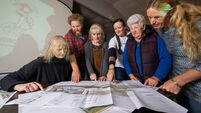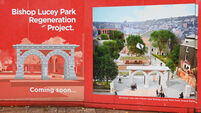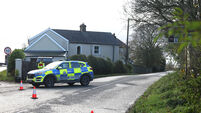Catherine Conlon: Is it time to give the streets back to the people?
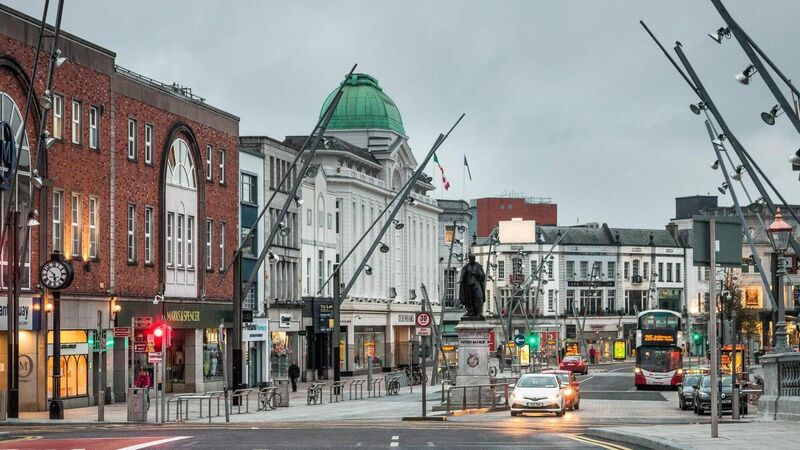
A recent survey by Cork City Council’s Climate Action Unit found two thirds of people in Cork agree that Cork must transform into a more sustainable place, with the majority (86%) in favour of more pedestrianised streets. Picture: David Creedon/Anzenberger
Cork gave the streets back to the people for a day last weekend, as members of the public were encouraged to travel into the city last Saturday on foot, bicycle, or by public transport “to enjoy the city streets without traffic and soak up the atmosphere”.
This once-off event saw the closure of Patrick Street, North Main St, Cornmarket Street, Castle Street, and Adelaide Street from noon until 6.30pm. The quays remained open to traffic and buses and taxis were able to access the closed streets as normal.
The initiative follows research from Cork City Council’s Climate Action Unit that showed that almost a third (29%) of greenhouse gas emissions (GHG) in the city are caused by transport.
Cork Chamber CEO Conor Healy said that Car Free Day is a great incentive to trial switching modes.
“Reductions in traffic also create a more pleasant street atmosphere for those visiting, shopping, and enjoying the cultural offering of our wonderful city,” Mr Healy said.
Getting cars out of the city is not a passing fad. In 1999, the mayor of Pontevedra in north western Spain was struggling to deal with poor air quality, a languishing economy, and an exodus of young people from the city. Mayor Fernandez Lores believed that the problem lay in the cars that were clogging the city streets.
Starting with the historic city centre, the mayor oversaw the removal of on-street parking, restricted car access and the widening of pavements. Predictable resistance followed but Mayor Lores was unmoved.
“It’s not my duty to make sure you have a parking spot,” he said at a conference in Cadiz in 2020.
It’s like if you buy a cow and ask me where to put it or you buy a freezer and you don’t have room in your house and you tell me you want space on the street to put it. Cars are the same.
The mayor added that cities like Amsterdam do not allow you to buy a car if you do not have a guaranteed place to leave it. The result is a city with crowds of people of all ages ambling along narrow streets, sitting in the shade socialising, eating, drinking coffee, and enjoying their surroundings free of traffic in a city that is easily traversable in under 30 minutes.
A bit like Cork.
Its slogan “fewer cars, more city” has lasted for more than two decades and is one that Cork City Council might consider adopting.
So, what are the advantages to cities that have embraced the “fewer cars more city” adage?
Without the constant clogging of the streets with cars, air pollution, risks of accidents, and noise, the streets return to the people. There are still cars but only those that are essential. In Pontevedra people with disabilities can drive with a permit, there is free parking on the edge of the city and there is limited parking time for deliveries.
The results of the policy are striking. On-street parking has all but disappeared and traffic lanes have been converted into pedestrian space.
“If you want to drive across Pontevedra, you can,” Mayor Lopez told Fast Company this month. “But you will waste a lot of time and realise it is impractical.”
Car trips have nose-dived (97%) in the last two decades in the 4.5 square kilometre city centre and fallen by more than half (53%) across the entire city of 46 square miles.
Along with car numbers, road traffic accidents have plummeted, with no traffic deaths since 2011.
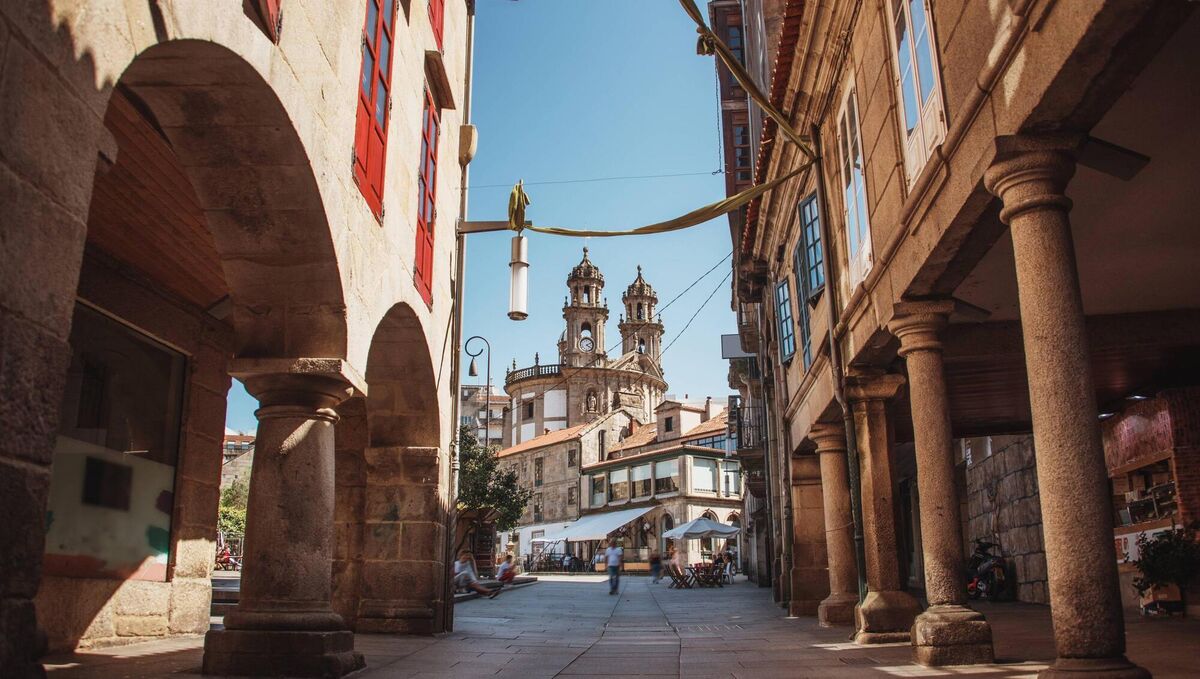
After a litany of devastating tragedies on Irish roads this summer, with high levels of both pedestrian and cyclist deaths, the experience of car-free cities suggests that reducing the number of cars in cities as well as limits on speed on city streets, has the ability to significantly contribute to making city streets safer.
A key benefit of the removal of cars from the city centre is that Pontevedra is now the fastest growing city in the province of Galicia. “People are relocating from the suburbs into the city as well as from other parts of Spain,” Mayor Lores said.
And it is not surprising. While the unrelenting downpour did not favour a trip into town by bus or bike last weekend, who wouldn’t want to live in a city devoid of cars and traffic? Or raise their children where they can mingle and play on widened pavements and tree-lined boulevards virtually devoid of cars? Where carbon dioxide levels are a third of what they were before the restrictions were introduced?
One of the main criticisms commonly thrown at projects aiming to reduce car use in cities is the potential to impact on businesses and economic activity. Businesses are routinely found to oppose car-free projects but there is ample evidence that prioritising movement on foot, bike, and public transport can actually increase business activity and revitalise local economies.
In one of the most ambitious car-free projects in Europe, the mayor of Paris, Anne Hidalgo plans to ban cars from much of the historic part of the French capital. Plans that are expected to be implemented in 2024 include a ban on most private vehicles for through traffic except for public vehicles, residents who live in the included areas, delivery drivers, and those accessing services such as shopping.
The move is expected to halve the number of cars on the road. Bloomberg estimates that implementation of the plan could remove 100,000 cars per day from Paris’s streets.
Some countries in Europe have been offering tax incentives that pay citizens to cycle to work instead of using a car. As an avid advocate of the benefits of cycling to both body and brain, I like the sound of that.
Belgium made headlines in July last year when it doubled its bike-to-work incentive from €0.10 to €0.20 per kilometre. A maximum of €8 or 40km per day on a two-way trip per working day can be granted. The incentive is limited to €664 a year, an amount that would put a hefty dent in a month’s rent for a city dweller.
A recent survey by Cork City Council’s Climate Action Unit found two thirds of people in Cork agree that Cork must transform into a more sustainable place, with the majority (86%) in favour of more pedestrianised streets, and almost everyone wanting more trees (89%) as well as parks, biodiversity, and greenspaces (92%).
Are the citizens of Cork ready to put their money where their mouth is and explore the more long-term benefits of a car-free city? If we were ready to follow our European neighbours, the once fully-walled ‘rebel city’ could be on the path to a cleaner, greener, safer, and even more vibrant future for residents and tourists alike.
- Dr Catherine Conlon is a public health doctor in Cork and former director of human health and nutrition, safefood
CONNECT WITH US TODAY
Be the first to know the latest news and updates



